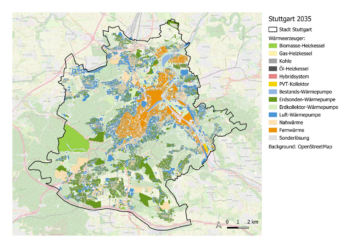Info: What is the EU Taxonomy for Sustainable Activities?
With the European Green Deal 1, the European Commission has announced a comprehensive program in 2019 that aims to make the EU climate neutral by 2050 and to promote sustainable business practices. The European Green Deal provides for an extensive range of measures that penetrate the most diverse areas of business and industry. An important role in the European Green Deal is played by the concept of “Sustainable Finance” 2. Sustainable Finance means that sustainability factors are taken into account in the decision-making processes of investments and financing. This is often done using so-called ESG (Environmental, Social, Governance) criteria.
As part of the European Green Deal and the EU’s Sustainable Finance Strategy, there are several innovations aimed at increasing transparency regarding the inclusion of sustainability criteria in decision-making processes for investments. The three most important new EU regulations on corporate sustainability reporting are the Corporate Sustainability Reporting Directive (CSRD), the Sustainable Finance Disclosure Regulation (SFDR), and the EU Taxonomy for Sustainable Activities.
What is the EU Taxonomy?
The EU taxonomy 1 2 is a classification system for economic activities that are classified as “sustainable” according to science-based criteria. For this purpose, the taxonomy first defines common sustainability goals to be achieved in the EU. Currently, the EU taxonomy includes the 6 environmental goals: “climate change mitigation,” “adaptation to climate change,” “sustainable use and protection of water and marine resources,” “transition to a circular economy,” “pollution prevention and control,” and “protection and restoration of biodiversity and ecosystems.” These goals may be expanded over time to include new goals, for example, the development of social goals is currently under discussion 3. Based on the sustainability goals, the EU taxonomy establishes a scheme according to which economic activities are classified as sustainable. According to this, an activity is considered sustainable according to the taxonomy if it
- 1)substantially contributes to one of the taxonomy goals (Substantial Contribution (SC) criterion),
- 2)does not violate any of the other taxonomy objectives (Do No Significant Harm (DNSH) criterion),
- 3) and complies with certain minimum standards (mostly concerning human and employee rights) (Minimum Safeguards criterion).
In doing so, certain criteria defined for the activity must be met for points 1) and 2).
These technical evaluation criteria for the SC and DNSH criteria are defined in the so-called Delegated Acts issued by the EU Commission. These Delegated Acts contain a list of concrete activities that are taxonomy-eligible, i.e., potentially support a taxonomy objective and do not violate any of the other objectives. For each taxonomy-eligible activity, the Delegated Acts also provide further detailed technical evaluation criteria for classification. Examples of taxonomy-eligible activities include renewable electricity generation or charging stations for electric cars. Many of these activities meet the SC criterion for climate action without demonstrating additional technical criteria. However, for some activities, such as electricity generation from geothermal energy, additional evidence is required that life cycle emissions are below a certain threshold, in this case below 100 g CO2 equivalents (eq.) per kWh of electricity. The technical assessment criteria for the DNSH criterion include, for example, the performance of a successful environmental impact assessment for the relevant project.
The process of determining taxonomy compliance is summarized in Figure 1.

The taxonomy is used in various ways. First, companies can use the EU taxonomy to determine what proportion of their sales, expenses, or investments are from sustainable activities. Since all companies use the same basis for determining sustainable activities with the help of the EU taxonomy, such information becomes more transparent and comparable. Also, in the future, the taxonomy will be used, for example, for the certification of a special type of green corporate bonds, the so-called EU Green Bonds1 . The money from an EU Green Bond may then only be invested in taxonomy-compliant activities. In principle, financial companies can use the EU taxonomy to develop financial products that, for example, invest a certain minimum proportion in taxonomy-compliant activities or explicitly promote certain environmental objectives of the taxonomy.
How does the EU Taxonomy relate to the SFDR and CSRD?
EU Taxonomy, CSRD, and SFDR form part of a larger “Sustainable Finance Framework” of the EU, which increasingly anchors sustainability factors in the economy (cf. Figure 2). Both the CSRD and SFDR contain metrics based on the EU taxonomy, which must be disclosed by the companies concerned.1

According to plans, the CSRD will in the future require all large companies to disclose sustainability information on their business activities in the management report. Large companies are companies that meet two of the following three criteria: >€40 million in sales, >€20 million in total assets, or >250 employees. The EU taxonomy specifies that companies affected by the CSRD must, among other things, integrate the share of taxonomy-compliant activities in their sales, investments, and operating expenses in the CSRD report. Thus, taxonomy-based key figures and disclosures will be included in the CSRD report of large companies in the future.
Financial companies that offer financial products and are affected by the SFDR are also partly obliged to include taxonomy-based key figures and additional information in respective documents regarding the financial product. This affects all financial products that have a sustainable investment as the goal of the financial product, either in whole or in part. Accordingly, financial companies must indicate the proportion of their respective financial products that are invested in taxonomy-compliant activities. To determine their taxonomy information, they will in the future refer to the CSRD reports of the companies in which they invest, among other things.
Who is required to report what and when?
The EU taxonomy primarily affects two groups of companies, which partly overlap. The first group consists of companies that are currently subject to the Non-Financial Reporting Directive (NFRD) and will in the future be subject to the renewal of the NFRD, the CSRD. This means that currently the large capital market-oriented companies with more than 500 employees are obligated to comply with the EU taxonomy. With the CSRD, this obligation is expected to extend to all large companies regardless of capital market orientation. The second group are the providers of financial products or financial advice and thus the companies that also fall under the SFDR.
The companies covered by the NFRD or, in the future, by the CSRD must report the proportion of their sales revenues, investments as well as operating expenses in taxonomy-compliant activities. These must also be reported at various levels of detail, for example, broken down into individual targets, and with additional disclosures. The more detailed content requirements for the taxonomy disclosures in the non-financial report or management report are set out in a so-called “Disclosures Delegated Act” by the European Commission 1. This specifies what is to be disclosed in the CSRD report and how this information is to be structured. Companies that fall under the SFDR and offer corresponding financial products with the aim of sustainable investment must disclose what proportion of the financial product’s investment is made in environmentally sustainable activities according to the taxonomy. For financial products that do not advertise environmental features, the product information need only be accompanied by a statement that they do not take into account the EU criteria of the taxonomy.

The EU taxonomy was adopted in 2020 and its disclosure requirements will come into effect in stages for climate change objectives 1 and 2 from January 1, 2022, and for the remaining targets 3 to 6 from January 1, 2023. This means that the first data will be collected in 2021 and published in 2022. In July 2021, the Disclosures Delegated Act for details on the content and format of taxonomy disclosures in the context of NFRD or, in the future, CSRD reporting was published by the European Commission 1] This still provides for an easing in the timetable. Thus, for 2022, the key figures of the EU taxonomy are initially to be reported only based on the potentially taxonomy-eligible activities. This means that the exact technical assessment criteria for 2021 do not have to be recorded yet, but it is sufficient that the activities are mentioned in one of the Delegated Acts as potentially taxonomy-compliant activities. For reporting in 2023 and recording in 2022, full taxonomy compliance, including the exact technical assessment criteria, must be verified.
In April 2021, the first Delegated Act, called the “Climate Delegated Act” 2, was also published on the activities and technical assessment criteria for objectives 1 and 2 of the taxonomy. It was officially adopted in December 2021. In February 2022, an extension of the Climate Delegated Act was also published by the European Commission 3 4. It includes the activities of electricity and heat generation from natural gas and nuclear energy in the EU taxonomy under certain criteria. A proposal for a so-called “Environmental Delegated Act” that includes activities and criteria related to the remaining goals 3 to 6 of the taxonomy is planned by April 2022 and would then probably enter into force in 2023 5.

What new challenges does this pose for companies?
The EU taxonomy is a new concept for many companies. In principle, there is therefore a major initial challenge to understand the concept and to familiarize oneself with the new requirements, especially in the form of the technical assessment criteria. Some companies are already familiar with similar concepts via their own Green Bonds, for example, although these currently do not have the same level of detail and quality requirements as the EU taxonomy. Due to the novelty of the concept, finding best practices and workable processes for meeting the requirements will be a key challenge in the coming years.
In addition, there are challenges related to the technical evaluation criteria. On the one hand, the criteria have to be checked at the level of the individual activities. This means, especially for larger companies with many activities, a high level of detail for the information to be collected and a high administrative burden. Furthermore, the taxonomy criteria for the activities sometimes cover a wide range of topics, from climate protection to sustainable water use. To check the criteria, various experts from the relevant fields are needed. The breadth of the required expertise is thus also associated with the challenge of increasing the interconnectivity of the relevant business units for taxonomy reporting. This is because, in addition to the specialist departments and sustainability management, the relevant finance departments of the company must also be involved in the preparation of the key figures to be reported.
Furthermore, the partly quantitative proof of the criteria is a challenge. In addition to the assessment of climate risks for activities, the performance of environmental impact assessments, also includes, for example, the recording of life-cycle based greenhouse gas (GHG) emissions. In general, life-cycle based considerations of activities play an important role in the taxonomy, so methods such as Life Cycle Assessment (LCA) will become more important for many companies in the future. Generally, detailed environmental information on business activities must be collected in the course of the taxonomy. Here, energy and environmental management systems, such as those according to ISO 50001, ISO 14001, or EMAS, can serve as a basis for collecting the data and coordinating the corresponding expertise for the taxonomy.
The EU taxonomy reinforces several trends in sustainability reporting. First, it increases the importance of sustainability criteria in the financing of economic activities. With the help of the EU taxonomy, it is possible, for example, to define green investment products that invest fully or to a certain minimum proportion in taxonomy-compliant activities and to direct capital flows based on sustainability aspects. Meeting sustainability criteria is thus becoming increasingly crucial when it comes to future financing of business activities. In addition, the EU taxonomy prominently introduces the concept of “integrated reporting”, i.e., a combination of financial and non-financial key figures. This integration of metrics describes a general trend that will become even more important for companies in the future. Accordingly, how sustainability metrics can be included in corporate performance assessment and investment decision-making processes is a more exciting challenge for the future.

Current discussion: Sustainability of power generation from natural gas and nuclear energy?
Another challenge within the EU taxonomy is to determine which activities should be classified as sustainable and according to which criteria. The European Commission has currently published an extension to the already valid Climate Delegated Act on Objectives 1 and 2. It extends the taxonomy-compliant activities to include electricity and heat generation from nuclear energy and natural gas 1 2 .
Natural gas is seen by many as a so-called bridging technology, i.e., an activity which is not sustainable as such, but which significantly supports the transition to a more sustainable energy supply. Therefore, the importance of sufficient financing for electricity generation from natural gas is pointed out by certain stakeholder groups and an inclusion in the EU taxonomy is demanded. This contrasts with the fact that electricity generation from natural gas is based on fossil fuel and therefore exceeds the threshold for life-cycle GHG emissions of 100 g CO2 -eq. per kWh. In the original final report of the Technical Expert Group (TEG), electricity generation from natural gas was indeed included, but with the limit of 100 g CO2 -eq. per kWh, which is difficult to achieve for fossil-fueled power plants 3. However, in the Climate Delegated Act currently in effect, electricity generation from natural gas was not initially included. However, in the currently published expansion of the Climate Delegated Act, natural gas-based electricity and heat generation or cogeneration is again included. The extension of the Delegated Act would provide, in addition to the life-cycle-based criterion, the following alternative criterion: direct GHG emissions of 270 g CO2 -eq. per kWh, as well as additional requirements such as future conversion to renewable or low-carbon gases.
Electricity and heat generation from nuclear power is also a much-discussed activity. Nuclear power represents a low-emission form of electricity generation and thus potentially supports the goal of climate protection. On the other hand, electricity generation from nuclear power violates the DNSH criterion, i.e., it significantly impairs the other environmental goals. This is due, for example, to the negative environmental impact of uranium mining and the storage of the resulting nuclear waste. With the currently published expansion of the Climate Delegated Act, the activity of generating electricity from nuclear energy would be included in the taxonomy. The criteria include, among others, the limit on life-cycle GHG emissions and compliance with certain existing European regulations on nuclear energy.
How can we support you?
FfE has already gained experience with the new regulations and their significance for companies in the energy and financial sectors. For example, as part of the project LC TAX, FfE has supported EnBW Energie Baden-Württemberg in recording GHG emissions over the life cycle of energy technologies and in building up methodological competencies in the area of life cycle analysis in the company.
We are pleased to support you with the new requirements in the course of the EU taxonomy, among others with:
- Translation of regulations into concrete requirements
- Collection and preparation of energy and emissions data for reporting purposes
- Implementation of life cycle analysis
- Training on “Life Cycle Assessment (LCA)” methodologies
- Preparing guidelines for the quantification of sustainability indicators


